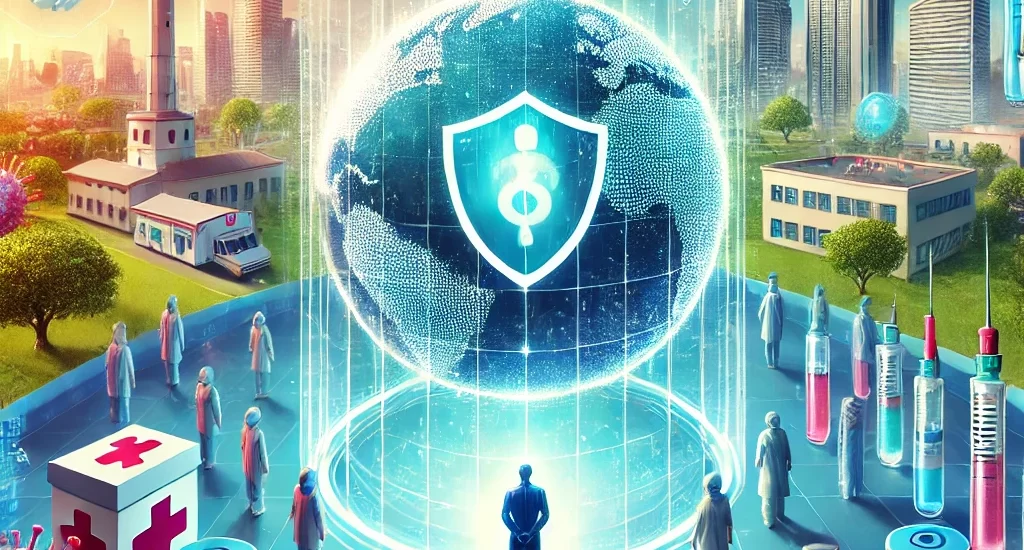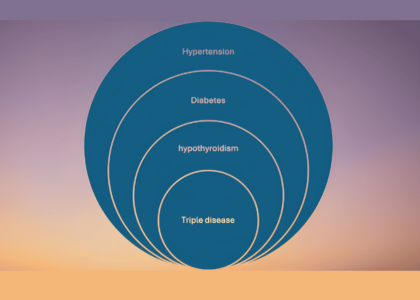As the world gradually recovers from the COVID-19 pandemic, many wonder whether a similar global health crisis could occur in the near future. While it’s impossible to predict the exact timing, several factors suggest that the risk of another pandemic remains significant. From new viruses emerging to climate change and the challenges of globalization, the threat of future pandemics is ever-present. Let’s dive into the key drivers of potential outbreaks and how we can be better prepared.
Factors That Could Trigger a Future Pandemic
- Emergence of New Viruses • Zoonotic Diseases: Diseases like COVID-19, SARS, and Ebola originated from animals. Deforestation, wildlife trade, and human encroachment on natural habitats increase the chances of humans encountering new, potentially deadly pathogens.
• Virus Mutations: Viruses are constantly mutating. Mutations can sometimes make them more transmissible or resistant to current treatments and vaccines, as seen with different variants of COVID-19. - Globalization and Urbanization • Rapid Spread: The interconnected nature of today’s world, with widespread international travel and densely populated urban centers, makes it easy for viruses to spread globally within days.
• Antibiotic Resistance: Antimicrobial resistance (AMR) is a growing concern. The overuse of antibiotics has led to bacteria that are harder to treat, posing a new threat in future pandemics. - Climate Change • Shifting Disease Patterns: As temperatures rise and ecosystems shift, diseases spread by insects (like malaria, dengue, and Zika) are expanding to new regions, including areas that previously had little exposure.
• Extreme Weather Events: Natural disasters caused by climate change, like floods or hurricanes, can disrupt public health systems and make populations more vulnerable to disease outbreaks. - Bioterrorism and Lab Leaks • Bioterrorism Threat: The deliberate release of harmful biological agents could cause a devastating pandemic. While rare, bioterrorism remains a concern for global security.
• Accidental Lab Leaks: Accidental releases of dangerous pathogens from research labs are possible. Strengthening safety protocols is essential to prevent such incidents. - Gaps in Global Health Preparedness • Healthcare Inequality: While some countries have robust healthcare systems, others, particularly low-income nations, struggle with inadequate infrastructure. This disparity could worsen the impact of future pandemics.
• Political Instability: Regions experiencing political conflict or economic instability are especially vulnerable to health crises, which can quickly escalate into global issues.
Do’s and Don’ts to Prevent and Prepare for Future Pandemics
Do’s
1. Invest in Public Health Infrastructure: Governments and health organizations must continue to strengthen healthcare systems, especially in underserved areas. Preparedness is key to managing future outbreaks.
2. Support Global Surveillance: Early detection systems, such as the WHO’s Global Outbreak Alert and Response Network, play a vital role in identifying and containing potential pandemics before they spread.
3. Promote Vaccination and Public Awareness: Ongoing education about the importance of vaccines, hygiene, and public health measures can help prevent future outbreaks. The faster the world gets vaccinated, the more controlled an outbreak becomes.
4. Support Research and Development: Continuous investment in R&D, particularly in vaccines, antiviral treatments, and antimicrobial resistance, is critical to staying ahead of emerging threats.
5. Practice Sustainable Living: Reducing deforestation, promoting wildlife conservation, and adopting sustainable agricultural practices can help limit human exposure to new viruses.Don’ts
1. Don’t Ignore Scientific Warnings: COVID-19 taught us the importance of acting quickly. Ignoring early warnings from scientists or public health officials can allow viruses to spread uncontrollably.
2. Don’t Delay Investment in Healthcare: Underfunded healthcare systems and delayed responses can turn manageable outbreaks into global crises. Proactive investment saves lives.
3. Don’t Contribute to Misinformation: Misinformation and conspiracy theories spread fear and hinder public health efforts. Fact-checking and promoting reliable information are crucial in times of crisis.
4. Don’t Overuse Antibiotics: Overprescribing antibiotics leads to resistance. Use antibiotics responsibly to avoid creating superbugs that could cause untreatable infections in the future.
5. Don’t Rely Solely on One Solution: Addressing pandemics requires a multi-pronged approach. Relying on one solution, like vaccines alone, without improving healthcare access, hygiene, or disease monitoring, will not be sufficient.Can We Avoid Another COVID-like Pandemic?
While the risk of future pandemics is real, we are more prepared than ever to handle them. The lessons learned from COVID-19 have led to significant improvements in vaccine technology, global surveillance, and public health responses. However, it’s essential that we remain vigilant and continue to invest in prevention, research, and education.
The road ahead will require global cooperation, and the responsibility lies not just with governments and scientists but with every individual. By taking proactive steps now, we can help minimize the impact of future pandemics and ensure that the world is better prepared to face these challenges.
Extra Features to Watch For
• mRNA Vaccine Revolution: The development of mRNA vaccines has changed how we respond to pandemics. This technology could be adapted quickly for future pathogens, offering faster protection.
• Artificial Intelligence in Health: AI is being used to track disease patterns and predict outbreaks. This technology could become crucial in identifying the next pandemic and managing its spread more effectively.
• Telemedicine Boom: COVID-19 brought telemedicine to the forefront, and it will likely remain a key tool in delivering healthcare during future crises, especially in remote areas.
• Sustainable Agricultural Practices: Many experts believe that sustainable farming and reducing human-wildlife interaction can help reduce the risk of zoonotic diseases jumping to humans.By staying informed, prepared, and proactive, we can help prevent or minimize the impact of future global health disasters. The world is constantly changing, and the threat of another pandemic is always there, but through collaboration and smart choices, we can build a more resilient future.












